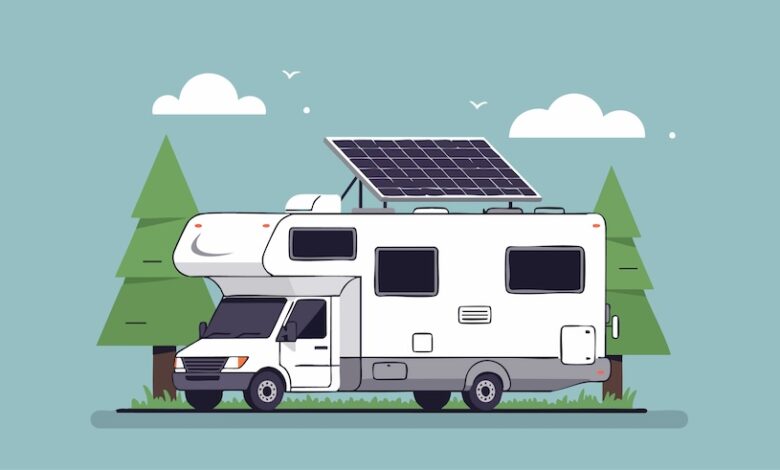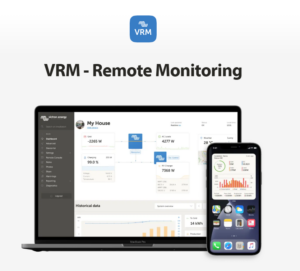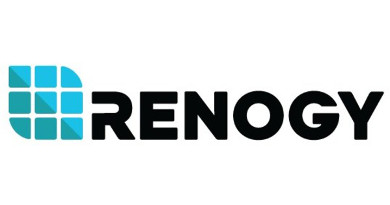3 Things People Get Wrong About RV Power Solutions
The top three misconceptions about RV energy systems and how real-time data and smarter power solutions can deliver more reliable, efficient performance.

While much of our daily lives are centered around technology, we don’t often give much thought to the energy that powers our various devices, vehicles or homes. We simply expect it to be there and view power as a ubiquitous resource.
RVers don’t have that luxury. From stop to stop, they need to find ways to “plug in,” no matter where the journey takes them. But as more and more RV manufacturers incorporate smart appliances and innovative technology into their motorhomes, reliable power sources are in more demand than ever — yet not every source is created equal.
Before you set out on your next adventure, understanding which elements you need to power your RV and how to access them are critical. Here are three things people get wrong about power solutions and what to do about it.
1. Solar Power Wasn’t Designed for RV Use
Although everyone talks about solar as a key part of the recent clean energy revolution, the first modern solar cell was developed back in the 1950s. Many are surprised to learn that the technology hasn’t changed significantly since that time. Solar panels were initially designed for wide open spaces with no shade and static scenarios, hence their popularity on top of buildings (like the White House) and the push to construct massive, open solar fields.
However, not every journey in an RV takes you through wide-open spaces. Many RV sites are shaded by trees or in the shadow of towering landscapes. Shaded cells cannot produce the same amount of power as nonshaded cells. If one solar cell atop an RV is impacted by shade — one wayward leaf, or shadows cast by an air conditioner, vent cap or other roof architecture — it can force nearly the entire panel to shut down, reducing power output by almost 90%. This is due to an important safety feature of the solar panel. If one cell stops working, the others may overheat and cause a fire hazard, so instead they shut down to preserve the integrity of the panel.
Picture Christmas tree lights — if one light goes out, they all go out. Solar panel technology was initially developed with the same mechanism in mind. Unfortunately, that’s little comfort for those relying on solar to power their journey.
Thankfully, there are new innovations that let the flow of current continue through even with a shaded cell — and do so without any safety hazards. Balancing technology is one such example. With this innovation, shaded cells can “borrow” power from nonshaded cells to open a current path. Standard panels will shut down completely when two to three cells are shaded. With balancing technology, panels can perform at efficient levels even when shaded.
Balancing technology also eases the burden on an electrical system such as the charge controller, battery or inverter. By eliminating the voltage spikes and throughput that is common with standard panels, balancing technology can extend the lifespan of solar panels and help keep the panel working at peak efficiency. Plus, there’s no need to deal with bypass diodes, which are often the first components to fail on a solar panel. This technology enables a more dependable and reliable source of energy, even for those going off-grid for extended periods of time.
2. Power Generation Is Not as Reliable as You May Believe
As any RV enthusiast can tell you, finding an independent power source and a working shore power connection are not always a guarantee. Your transfer switch may be ready to receive power, but if there’s a faulty connection or issues with the campground’s power pedestal, you’re out of luck. Stable power resources are vital, especially if you are looking to take your RV off-grid.

Stored power solutions have emerged as a way to mitigate those issues. Featuring integrated battery-powered systems, chargers and monitoring solutions, these energy systems can provide a reliable source of power when other options aren’t available. Working in tandem with the RV’s electrical system, these components can capitalize on the solar power accessible (as mentioned above) and not only provide emergency backup power but also serve as a consistent energy source.
3. Power Monitoring Is as Important as Your Power Source
As mentioned, manufacturers are increasingly incorporating smart technologies into RVs so consumers can enjoy the convenience and improved experience that these innovations may bring. However, such advancements require owners to pay even more attention to power sources and their lifespan. One underutilized way to ensure you have all the power you need to use your smart appliances and other innovations is to consider power monitors.
Using real-time data, these systems can regulate power in the RV even while you sleep. For example, power monitors can take a temperature check and lower the thermostat to a targeted level, so the air conditioning isn’t running high all night. They can also instruct the systems to run off battery power if shore power isn’t an option. These systems are easily run from a touchscreen inside the RV or through an app if Wi-Fi isn’t an issue in your location.
Access to reliable power sources is an essential element for an efficient and enjoyable RV trip. However, the only way to save more energy is to generate more energy, and traditional solar panels may not be able to handle today’s power demands. By considering innovative technology applications that are built to support how RVs operate — complete with smart appliance technology — you can tap into more power and more reliable power no matter wherever the journey takes you. These applications not only perform more efficiently — even in shade — but also produce more energy, with the same input, giving RVers a chance to truly take advantage of eco-friendly power options.
Read more about RV power solutions HERE.


